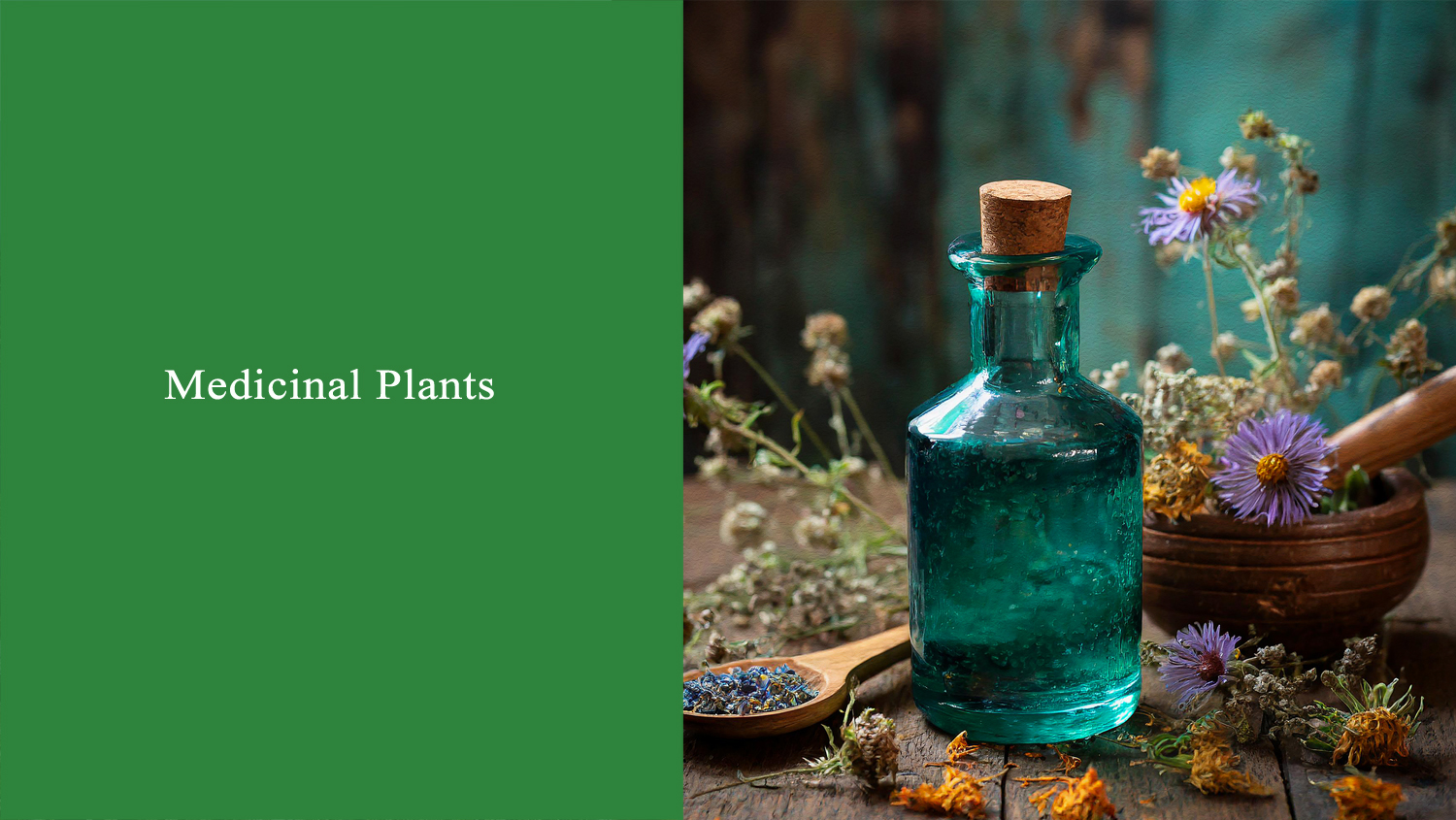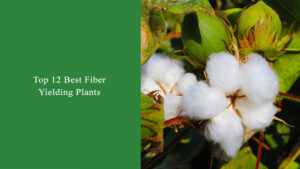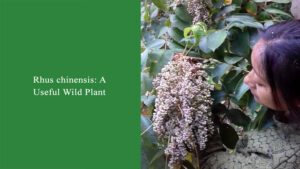Top 50+ Medicinal Plants of Nepal
Do you want to know about the important medicinal plants of Nepal? Then, you are in right place.
In this article, I will share with you the top 50+ medicinal plants of Nepal.
Nepal is rich in plant diversity. So, a large number of plant species having useful chemical constituents are found in Nepal, which is traditionally practiced to cure the diseases in various places of the country.
Specifically, Himalayan regions of Nepal are famous for medicinal plants. Most of the valuable medicinal i.e. Swertia chirayita, Dactylorhiza hatagirea, Picrorhiza kurroa, and Paris polyphylla, etc. grow in the Himalayan regions.
Here are the list of top 51 medicinal plants:
- 1. Acorus calamus
- 2. Mentha spicata
- 3. Ocimum sanctum
- 4. Tinospora cordifolia
- 5. Rauwolfia serpentina
- 6. Azadirachta indica
- 7. Bryophyllum pinnatum
- 8. Cannabis sativa
- 9. Terminalia chebula
- 10. Zanthoxylum armatum
- 11. Swertia chirayita
- 12. Smallanthus sonchifolius
- 13. Centella asiatica
- 14. Rubus ellipticus
- 15. Rhododendron arboreum
- 16. Osyris wightiana
- 17. Phyllanthus emblica
- 18. Psidium guajava
- 19. Scutellaria discolor
- 20. Ageratina adenophora
- 21. Momordica balsamina
- 22. Inula cappa
- 23. Cuscuta reflexa
- 24. Drymaria cordata
- 25. Citrus limon
- 26. Aloe vera
- 27. Curcuma caesia
- 28. Amomum subulatum
- 29. Artocarpus lakoocha
- 30. Asparagus racemosus
- 31. Artemisia vulgaris
- 32. Belamcanda chinensis/Iris domestica
- 33. Cinnamomum camphora
- 34. Clerodendrum chinense (C. philippinum)
- 35. Tagetes minuta
- 36. Punica granatum
- 37. Semecarpus anacardium
- 38. Achyranthes aspera
- 39. Bergenia ciliata
- 40. Rhus javanica (Rhus chinensis)
- 41. Coccinia grandis
- 42. Oxalis corniculata
- 43. Cynodon dactylon
- 44. Rubia cordifolia
- 45. Dioscorea deltoidea
- 46. Juglans regia
- 47. Bauhinia variegata
- 48. Piper Longum
- 49. Dactylorhiza hatagirea
- 50. Nardostachys grandiflora
- 51. Taxus wallichiana
1. Acorus calamus
Common name: Sweet flag, Nepali name: Bojho, Order: Acorales, Family: Acoraceae
Acorus calamus is a perennial flowering herb. Especially, it grows in wetland, pond, and in moist places. It grows about 2 m tall. A volatile oil found in rhizomes makes it favorable and useful in the perfume industry.
It offers yellowish-green flowers, sword-shaped leaves, and an aromatic rhizome. Acorus calamus is useful for multiple purposes i.e. ornamental, medicinal, and flavoring agent.
Disease cured: Toothache, throat pain, digestive disorders, and tonsillitis
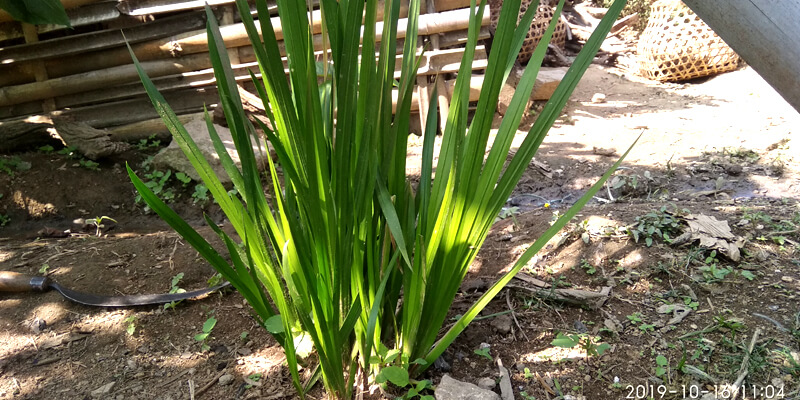
2. Mentha spicata
Common name: Spearmint, Nepali name: Pudina, Order: Lamiales, Family: Lamiaceae
Mentha spicata is another famous aromatic and medicinal plants in Nepal. People use it as a kitchen spice. But, in some countries, farmer cultivates Mentha spicata for its medicinal value too.
The essential oil can also extract from spearmint. The oil contains useful chemical constituents including carvone, limonene, and menthol. This oil acts as flavoring agents for shampoos and toothpaste.
Disease cured: Fever and Digestive disorder.
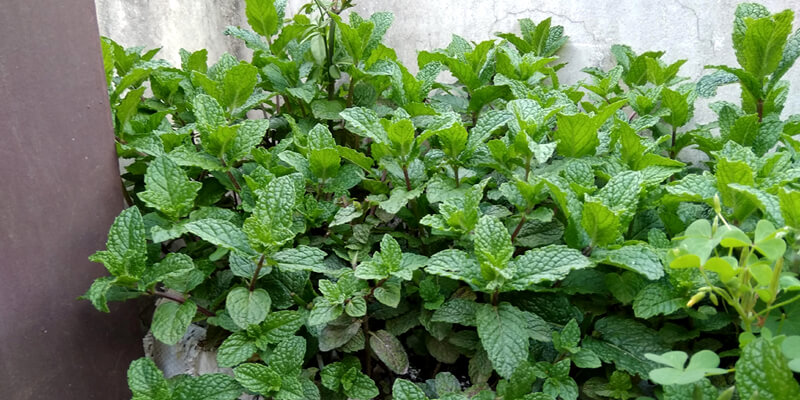
3. Ocimum sanctum
Common name: Holy basil, Nepali name: Tulsi, Order: Lamiales, Family: Lamiaceae
Ocimum sanctum is also one of the famous medicinal plants. It grows in different parts of the world including Nepal, India, Australia, and Africa.
It is a short-lived plant and grows up to 60 cm high. This plant offers green or purple leaves and hairy stems. All plant parts produce a strong pleasant smell.
The valuable essential oil can also extract from this plant. Some of the useful chemical constitutes of the tulsi plants are eugenol, ursolic acid, linalool, and rosmarinic acid.
At the same time, it has religious value too. Especially, Hindu people worship this plant as the avatar of goddess Lakshmi.
Disease cured: Fever, Indigestion, Common cold, and Bronchitis, etc.
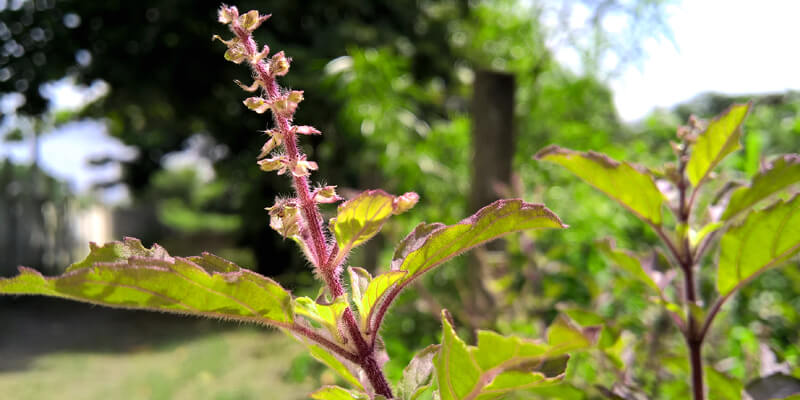
4. Tinospora cordifolia
Common name: Heart-leaved moonseed, Nepali name: Gurjo lahara, Order: Ranunculales, Family: Menispermaceae
Tinospora cordifolia is a woody climbing medicinal shrub. It grows in temperate to tropical regions of Nepal. Whole plant parts are useful in Ayurvedic medicine.
It contains red berries, yellowish flowers, long aerial roots, and also green heart-shaped leaves with elongated twining branches. Alkaloids, Steroids, and then Terpenoids are major phytochemicals of the Tinospora cordifolia.
Disease cured: Cure jaundice, Fever, and Improve the immune system.
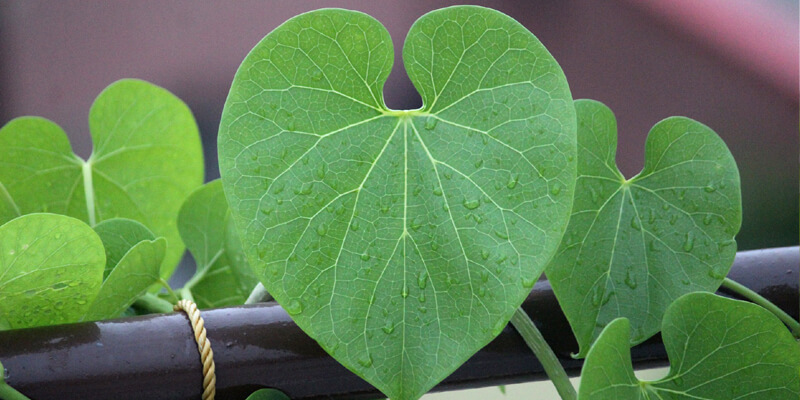
5. Rauwolfia serpentina
Common name: Devil pepper, Order: Gentianales, Family: Apocynaceae
Rauwolfia serpentine is an herb or small shrub which grows in the Himalayan regions of eastern Asia. It is rich in phytochemical reserpine. Firstly, this plant grows in moist and fertile soil. Secondly, it grows up to 1m tall.
Disease cured: Systolic hypertension, Schizophrenia, and Insomnia.
6. Azadirachta indica
Common name: Neem tree, Order: Sapindales, Family: Meliaceae, Flowering season: February-May, Fruiting season: June-August
Azadirachta indica is another most valuable medicinal plants which grows in sub-tropical to tropical regions. The essential oil can also obtain from seeds and fruits of neem.
This evergreen tree grows up to 20 meters high. It has a high growth rate too. Same as other ornamental plants, it also contains white flowers, dark grey bark, greenish-yellow fruits, and green leaves with a bitter taste.
Neem prefers well-drained and sandy soil. This plant is drought tolerant but very susceptible to cold i.e. below 4 degrees Celsius. In Nepal, It grows as a dominant species in the Terai regions including Chitwan and Rupandehi districts.
Disease cured: Ulcers, Ringworm, Tuberculosis, Leprosy, and Diabetes.
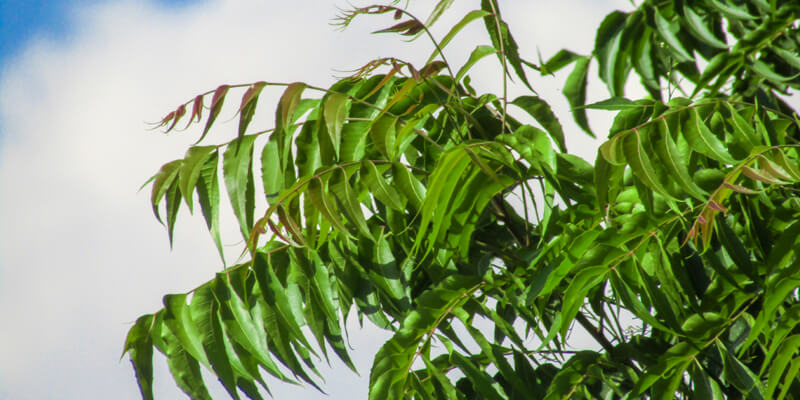
7. Bryophyllum pinnatum
Common name: Cathedral Bells, Order: Saxifragales, Family: Crassulaceae
Bryophyllum pinnatum is a perennial succulent plant. It is widely distributed in Nepal, tropical Africa, India, and Madagascar.
This plant grows in subtropical and tropical areas. Its height reaches up to 1 m high. This plant contains red-orange flower, fleshy and elliptical-shaped leaves.
In Nepal, it is grown in home gardens for both medicinal and ornamental purposes. Triterpenes, flavonoid, steroid, and phenolic acid are major phytochemicals of Bryophyllum pinnatum.
Disease cured: Kidney stone, Diarrhea, and Headache.
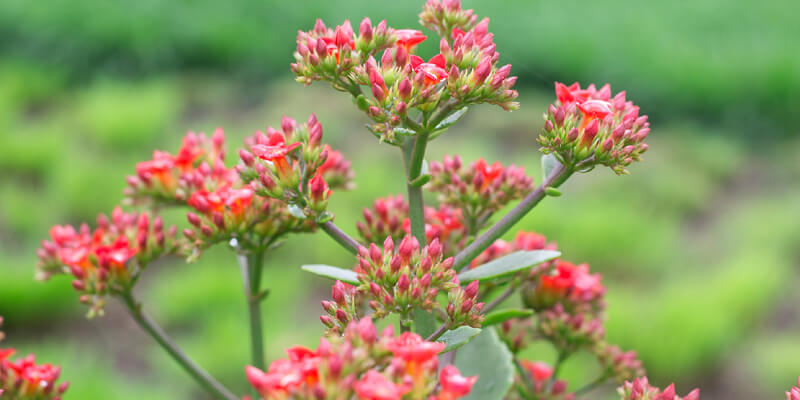
8. Cannabis sativa
Common name: True hemp, Nepali name: Ganja, Order: Rosales, Family: Cannabaceae
Cannabis sativa is an herb that is found all over the world and uses in the extraction of fiber, fuel, oil, and medicine. It is an annual short-day flowering plant growing up to 0.8-2.5 m high.
All of the parts including leaves, stem, root, and seeds of Cannabis sativa are edible. The fresh leaves of the plant cure stomachache but more doses can be dangerous.
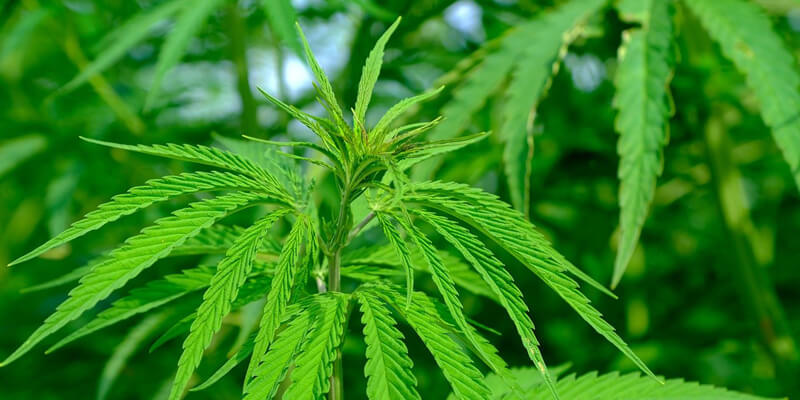
9. Terminalia chebula
Common name: Chebulic myrobalan, Nepali name: Haroo, Order: Myrtales, Family: Combretaceae, Flowering season: May-June, Fruiting season: July-December
Terminalia chebula is a tropical deciduous tree that grows up to 30 m tall. It is found in tropical regions of Nepal, Bhutan, Myanmar, India, Vietnam, Pakistan, and other places of the world. Same as the other medicinal plants, the green to orange-brown fruits of Terminalia chebula has also a great medicinal value.
It has dark brown bark and white flowers having an unpleasant odor. People believe that Terminalia chebula has extraordinary healing power. So, in Tibet, it has named “King of Medicine”.
Disease cured: Vomiting, Ulcers, Throat pain, Bleeding piles, and Common cold.
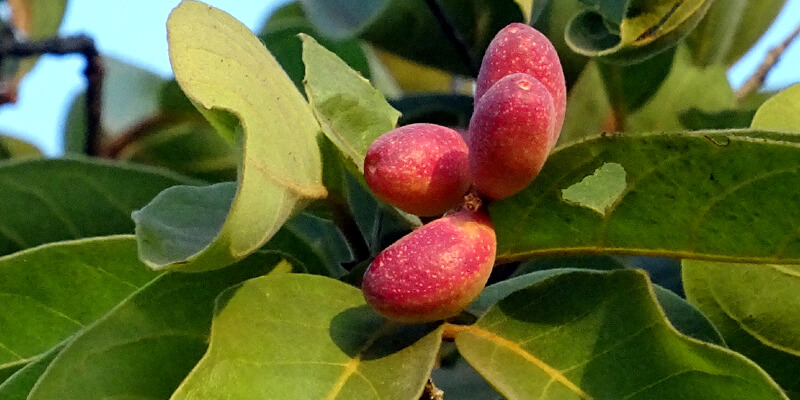
10. Zanthoxylum armatum
Common name: Prickly ash, Nepali name: Timur, Rai name: Khagchang, Order: Sapindales, Family: Rutaceae, Flowering season: April-May, Fruiting season: August to October
Zanthoxylum armatum is an aromatic and evergreen small tree that is widely distributed in subtropical regions of Nepal, Bhutan, Pakistan, and Japan. It contains thorns and small fruits with a pungent aromatic taste. This plant grows up to 5-6 meters tall.
The plant yields essential oil. In Nepal, the powder of its seed is used as kitchen spice. Similarly, it’s bark is famous for fish poison.
Disease cured: Fever, Cholera, Dyspepsia, Gastritis, and Toothache.
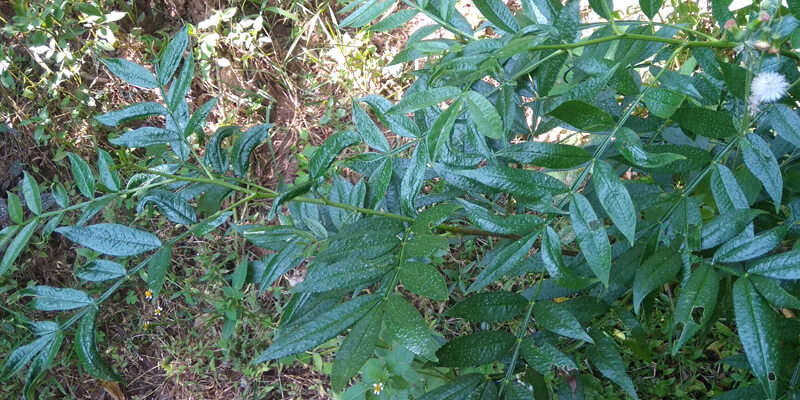
11. Swertia chirayita
Common name: Chiretta, Nepali name: Chiraito, Rai name: Khagchang, Order: Gentianales, Family: Gentianaceae
Swertia chirayita is another well-known medicinal plants. It is found in the Hilly as well as Himalayan regions of Nepal. It grows in moist shady places. This annual/ biennial herb grows up to 1.5 meters high.
Especially, the leaves and stems of the plants help to lower blood pressure (High Blood Pressure). It is also used to treat malaria, diabetes, and inflammation.
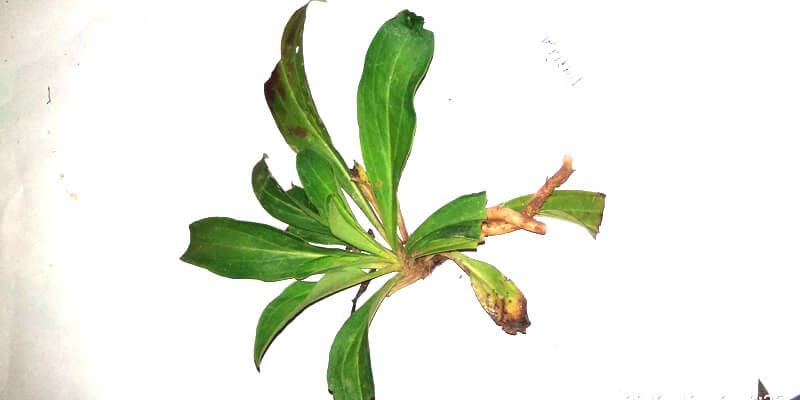
12. Smallanthus sonchifolius
Common name: Yacon or Ground apple, Nepali name: Bhuisyau, Order: Asterales, Family: Asteraceae
Smallanthus sonchifolius is one of the cultivating plants. It is famous for its sweet edible tubers. Therefore, people consume its tuber in all forms: raw, cooked, dried, and boiled. It is also a fast-growing plant that grows up to 3 meters high.
This plant prefers warm climates with a temperature range of 18-25 degrees Celsius. It offers opposite leaves, branched roots, and also orange color flowers.
Smallanthus sonchifolius is grown in Nepal, New Zealand, Australia, Colombia, Argentina, India, and other parts of the world. Yacon tubers offer nearly 70% of water and also 40-70% of fructo-oligosaccharides.
Disease cured: Diabetes, Digestive problems, and, Reduce body weight.
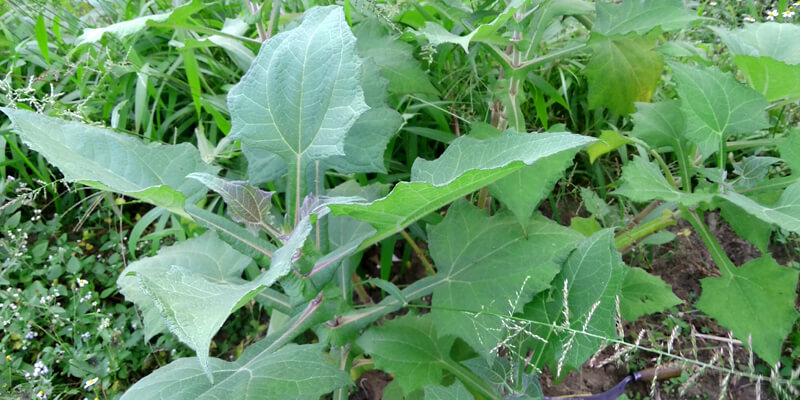
13. Centella asiatica
Common name: Gotu kola, Nepali name: Ghodtapre, Rai name: Vaknabu, Order: Apiales, Family: Apiaceae
Centella asiatica is a small herb having pink flowers, creeping stolons, and green leaves. But its green leaves offer no taste and odor. Mostly it grows in moist and shady places.
This plant is native to Southeast Asia. Large number of chemical constituents are found in this plant, for example: Asiatic acid, Centellose, Brahmoside, and Triterpenoids. Its yellowish-green leaves are edible and famous for food as well as medicinal purposes.
Disease cured: Contact dermatitis, Throat pain, Skin irritation, and Depression too.
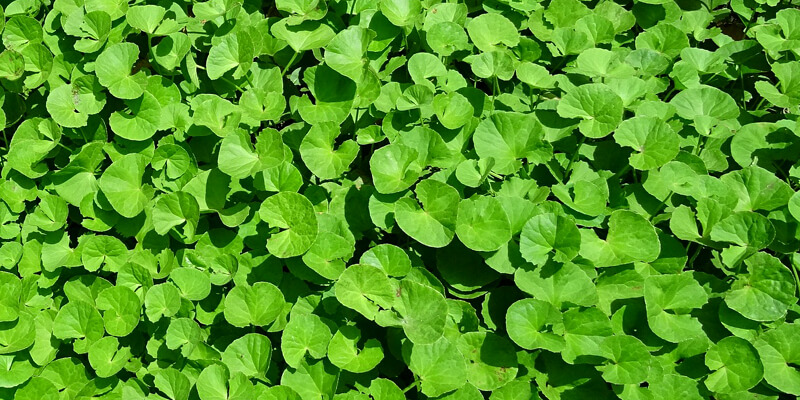
14. Rubus ellipticus
Common name: Yellow Himalayan raspberry, Nepali name: Ainselu, Rai name: Weisi, Order: Rosales, Family: Rosaceae, Flowering season: February- April.
Yellow Himalayan raspberry is one of the tropical thorny shrubs. Its height reaches above 4 m tall. It is also widely distributed through many places of Nepal, China, the Philippines, and India.
This plant offers small white flowers, thorny stems, and leaves with edible yellow small fruits. At the same time, the young stems of the plant are also edible which gives a bitter taste.
Diseased cured: Fever, Common cold, Sore throat, and also Stomachache.
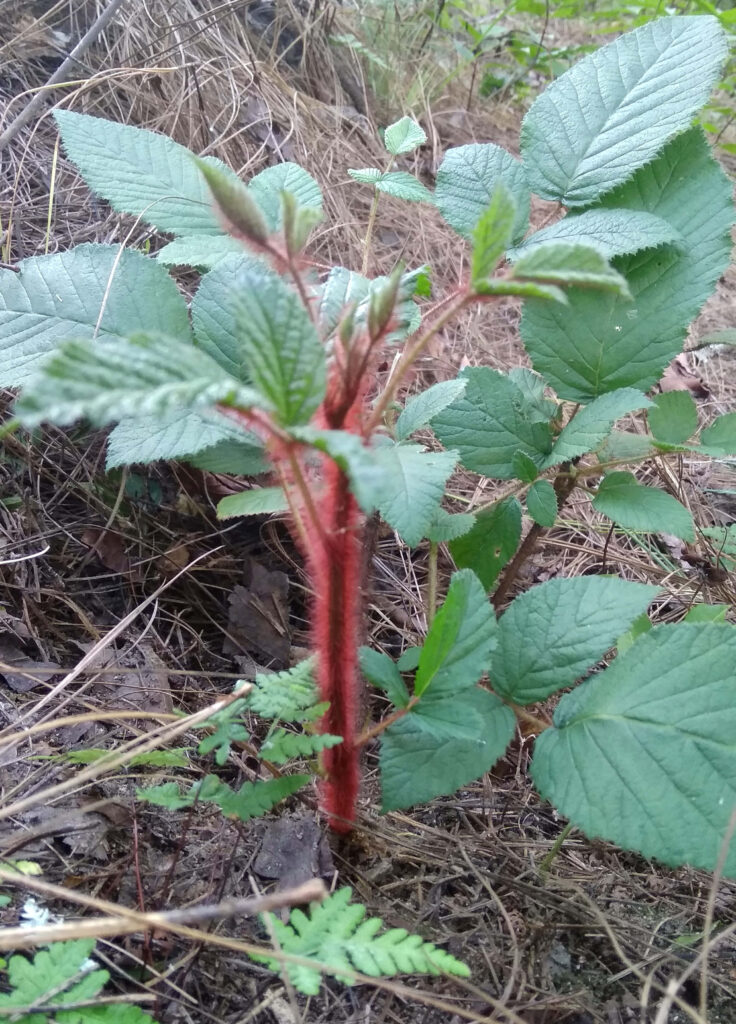
15. Rhododendron arboreum
Common name: Gurans, Nepali name: Laligurans, Rai name: Dagbung, Order: Ericales, Family: Ericaceae, Flowering season: April-May
Rhododendron arboreum is an evergreen shrub or small tree growing up to 20 m. It contains dark green leaves and attractive flowers. This plant is found in Nepal, Bhutan, China, Thailand, and then in Sri Lanka. It is also the national flower of Nepal and the state flower of Nagaland.
Disease cured: Headaches, coughs, and Blood diarrhea.
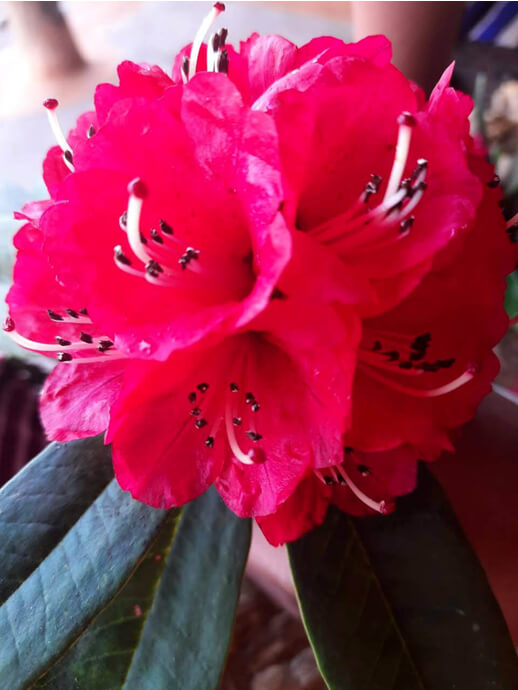
16. Osyris wightiana
Common name: African sandalwood, Nepali name: Noondhiki, Rai name: Yumtang, Order: Santalales, Family: Santalaceae, Flowering season: April- June
Osyris wightiana is also one of the common shrubs found in the sub-tropical to tropical regions of Asia and Africa. It offers small numerous green leaves and red attractive fruits. But fruits are non-edible. This plant specifically grows in humus-rich and well-drained soil.
Disease cured: Body pain, Skin disease, and Improve blood circulation.
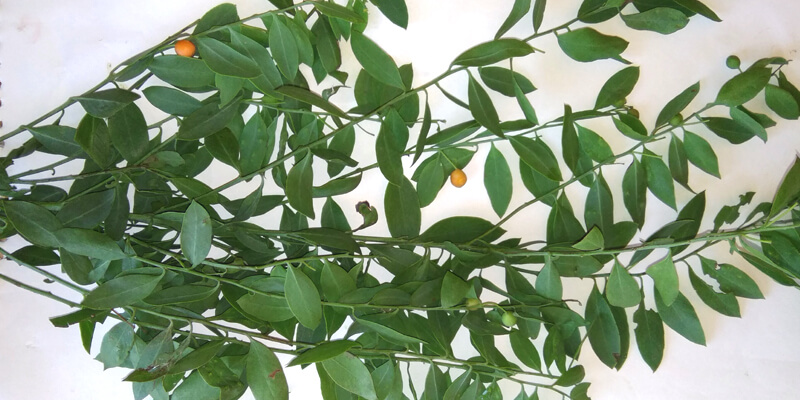
17. Phyllanthus emblica
Common name: Emblic (gooseberry), Nepali name: Amla, Order: Malpighiales, Family: Phyllanthaceae
Phyllanthus emblica is another best medicinal plants. It is a deciduous wild tree with having a height of 15 meters. It also grows in the tropical region of the world. The flowers of Phyllanthus emblica are greenish-yellow.
Its fruits are edible but offer a sour and bitter taste. Even though, people consume the fruit of gooseberry in a different form: raw, cooked, and dried. Fruits are also used to make hair oils, shampoos, and other cosmetics items.
Phyllanthus emblica tree can survive on both forest fire and drought.
Disease cured: Reduce diarrhea, cough, fever, and Stimulate hair growth.
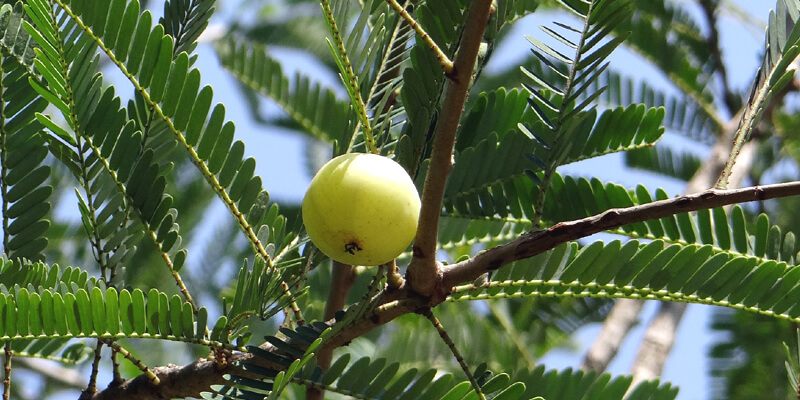
18. Psidium guajava
Common name: Guava, Nepali name: Amba, Rai name: Ambaka, Order: Myrtales, Family: Myrtaceae
Psidium gaujava is a tropical evergreen small tree or shrub. Plantation of this tree can be done by both seeds and by vegetative means. Especially, this plant is cultivated for its edible sweet fruit.
Insects are major pollinators of this plant. Its flowers are white with four to six corollas and the skin color of ripened fruits is yellowish with a pleasant smell.
Disease cured: Diarrhea, Diabetes, Inflammation, Wounds, Rheumatism, and Stomachache.
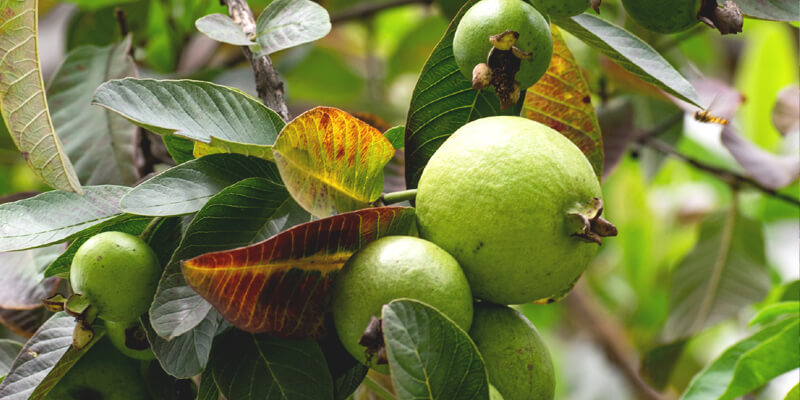
19. Scutellaria discolor
Common name: Bicolor Skullcap, Nepali name: Nilo butte ghans (Daampaate), Family: Lamiaceae Flowering season: July- November
Scutellaria discolor is an herbaceous medicinal plants native to Nepal, Thailand, India, Malaysia, Bangladesh, and Vietnam. Especially, it can be found in moist, fertile soil and shady places.
The plant offers fibrous like yellow roots but rich in bitterness. However, the roots have high medicinal value. Its height normally reaches up to 1-2 ft tall. Scutellaria discolor has a purple to white flower and elliptic leaves.
Disease cured: Tonsillitis as well as indigestion.
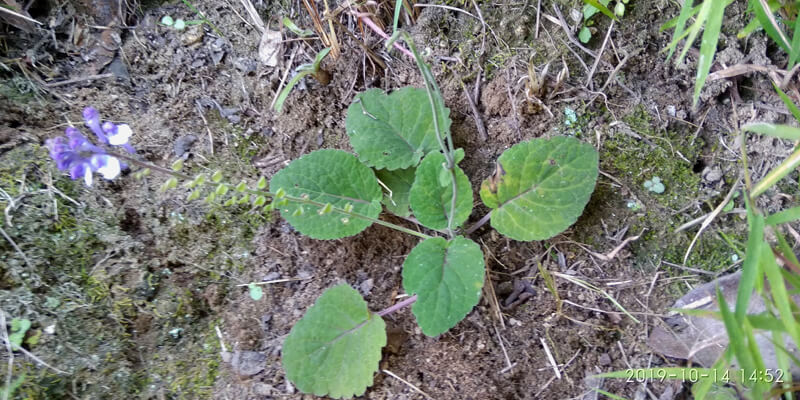
20. Ageratina adenophora
Common name: Crofton weed, Nepali name: Banmara, Rai name: Apute, Order: Asterales, Family: Asteraceae
Ageratina adenophora is one of the invasive plant species in Nepal but native to Central America and Mexico. It is the most common but destructive herbaceous under-shrub in the forests of the country.
This plant has small numerous flowers and green leaves having an unpleasant aroma. It grows 2 meters tall. The paste of its leaves as well as young stems cure cut wounds.
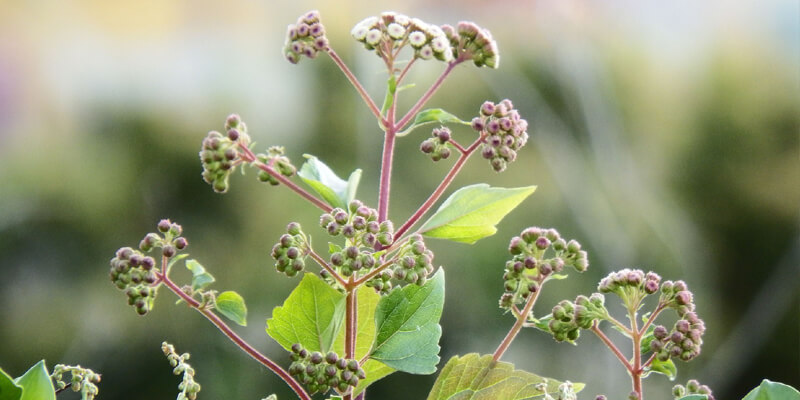
21. Momordica balsamina
Common name: Balsam apple, Nepali name: Bankarela, Order: Cucurbitales, Family: Cucurbitaceae
Momordica balsamina is a climber plant found in both tropical and sub-tropical regions of Asia and Africa. The height of this plant reaches up to 5 meters high.
The fruits of Balsam apple offer a bitter taste. However, fruits have food as well as medicinal value. In Nepal, mature fruits of this plant are consumed as a vegetable.
Disease cured: Wounds, Fever, High blood pressure, and Rheumatism.
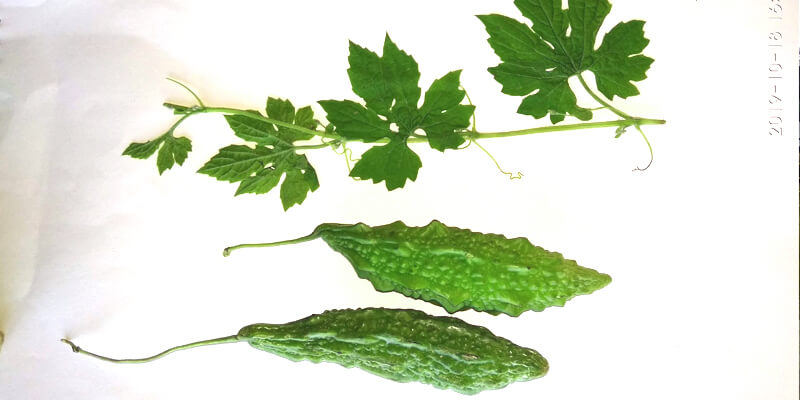
22. Inula cappa
Common name: Sheep’s ear, Nepali name: Kanpate, Rai name: Bakhra nabak, Family: Asteraceae, Flowering season: August- February
Inula cappa is a shrub found in the tropical regions of Nepal, China, and India. It grows up to 1.8 m high. The flowers of this plant are yellow and leaves are green, leathery, and sharp-tipped. It is a flowering plant.
Inula cappa is also called sheep’s ear because it offers sheep’s ears like hairy leaves.
Disease cured: Peptic ulcers, Throat pain, Indigestion, Fever, and Pneumonia.
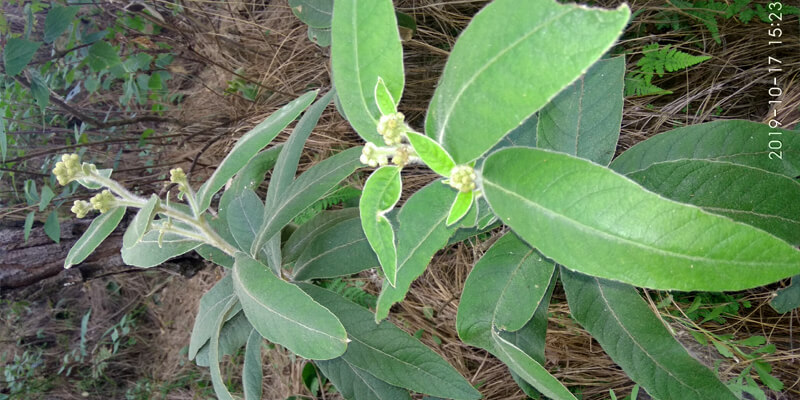
23. Cuscuta reflexa
Common name: Giant dodder, Nepali name: Pahelo lahara, Order: Polemoniales, Family: Convolvulaceae
Cuscuta reflexa is one of the parasitic herbs. Its growth occurs extensively fast. This plant has no root system. Giant dodder offers small white flowers and yellowish vine. It gets its food and water from the host plant through haustorial roots.
Disease cured: Fever, Headache, Jaundice (Yellow fever), and Rheumatism.
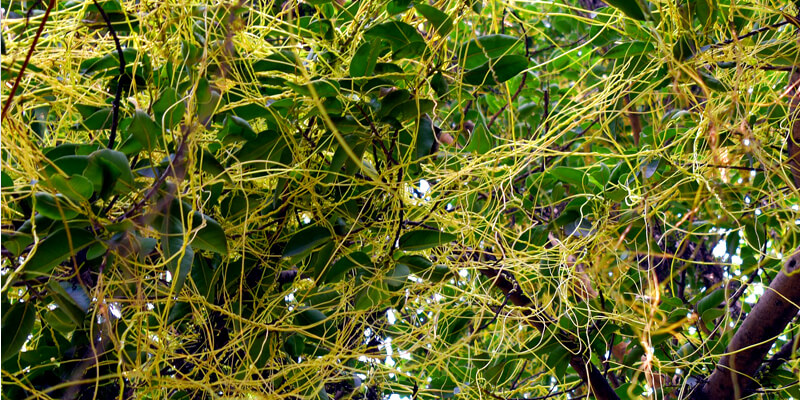
24. Drymaria cordata
Common name: Tropical chickweed, Nepali name: Abhijalo, Order: Caryophyllales, Family: Caryophyllaceae, Flowering season: July to August
Drymaria cordata is an annual herb found in tropical and subtropical regions. It contains a white small flower, weak stems, and is highly branched.
This plant grows in moist soil and its height reaches up to 50 cm tall. It has a high growth rate, so covers a large area of the land within a certain period.
Disease cured: Colds, Snakebites, Bronchitis, Malaria, and Wildness (unconsciousness, shivering, fever, vomiting).
25. Citrus limon
Common name: Lemon, Nepali name: Kagati, Order: Sapindales, Family: Rutaceae
Citrus limon is a perennial plant that grows up to 3 meters tall. It is an evergreen flowering plant and it offers yellowish fruit having an acid flavor and strong aroma.
The juice and essential oil can extract from the mature fruit of Citrus limon which is used to flavor food, cure disease, prepare soap, and for other cleaning purposes.
Disease cured: Scurvy, Sore throat, and dry skin problem (cracked heels).
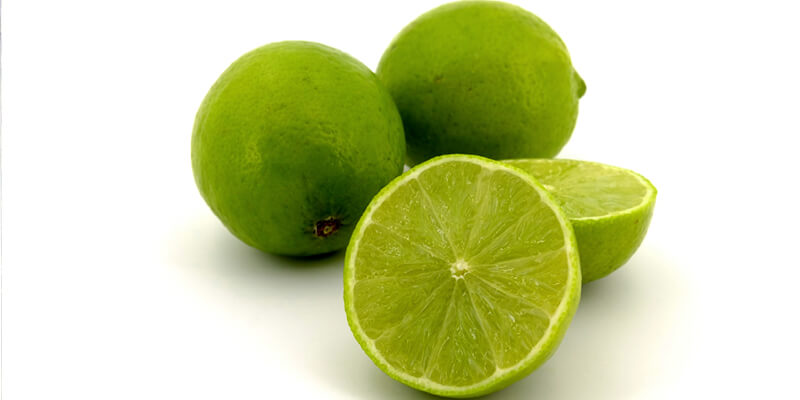
26. Aloe vera
Common name: Burn aloe, Nepali name: Ghyu kumari, Order: Asparagales, Family: Asphodelaceae
Aloe vera is one of the popular medicinal plants which are used all over the world. It is succulent leaves species of plants found in tropical areas around the world.
In some places of Nepal, it is cultivated for medicinal and ornamental value. The jelly-like inner mass of the fresh leaves is used to cure a large number of ailments.
Disease cured: Constipation, Normal burns, Acne, Dry Skin, and Psoriasis.
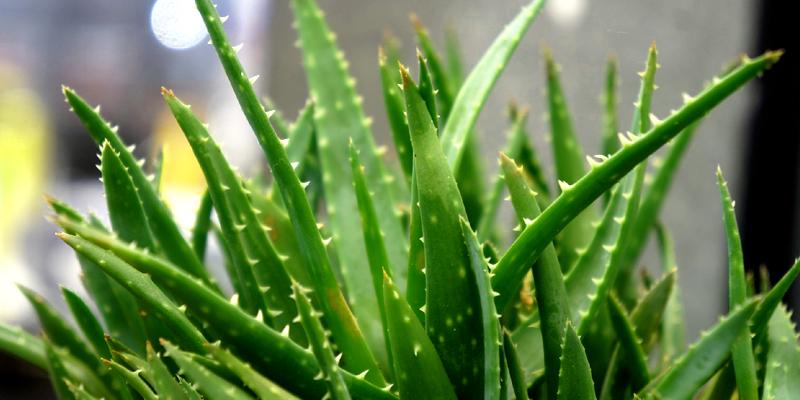
27. Curcuma caesia
Common name: black turmeric, Nepali name: Besar, Rai name: Kalo Hardi, Order: Zingiberales, Family: Zingiberaceae
Curcuma caesia is one of the most common spices of herbaceous plants. It offers zinger-like rhizome which is used as medicine. This plant grows up to 1 m tall.
It is mostly cultivated in the hilly as well as Terai regions of Nepal. The fresh or dry rhizome of the plant treats Tongue bumps.
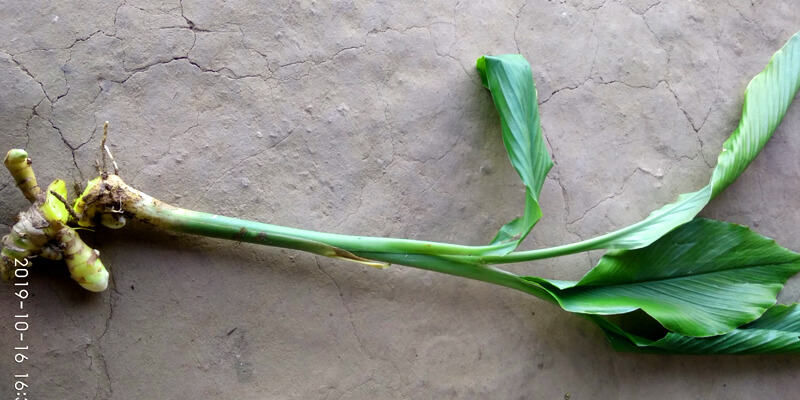
28. Amomum subulatum
Common name: Black cardamom, Nepali name: Alaichi, Order: Zingiberales, Family: Zingiberaceae
Amomum subulatum is a perennial herb with a height of about 1.5 m tall and offers seeds with a strong aromatic taste. It grows well in a shaded area with fertile and moist soil.
The powder of its seed is also famous as a kitchen spice. In many places of Nepal, Amomum subulatum is cultivated on a commercial scale.
If you are planning to cultivate Amomum subulatum, then plant Alnus nepalensis together because the tree of Alnus nepalensis provides a suitable environment for the growth of black cardamom.
Disease cured: Malaria, Stomach disorders, Throat pain, and Scalding urine (burning during urination).
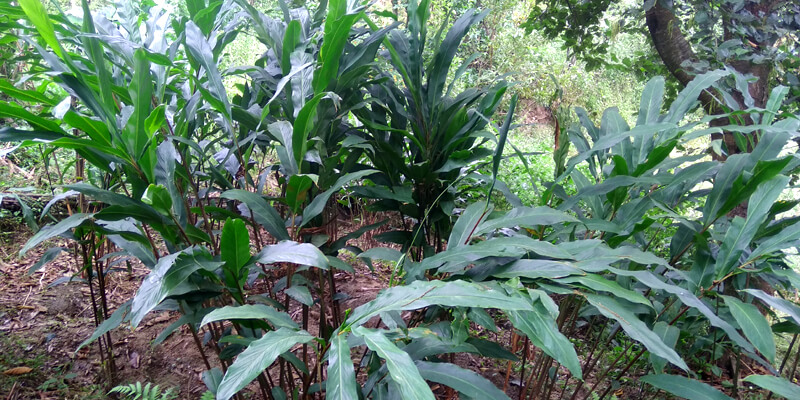
29. Artocarpus lakoocha
Common name: Monkey fruit/monkey jack, Nepali name: Badahar, Order: Rosales, Family: Moraceae
Artocarpus lakoocha is a tropical deciduous tree offers the height of 10-15 meter. It contains edible yellowish fruits when ripened and large elliptic leaves. Fruits are also eaten in the form of curies and pickles.
In hilly regions of Nepal, people cultivate Artocarpus lakoocha for food and fodder value. The resin of the plants is used to cure mumps.
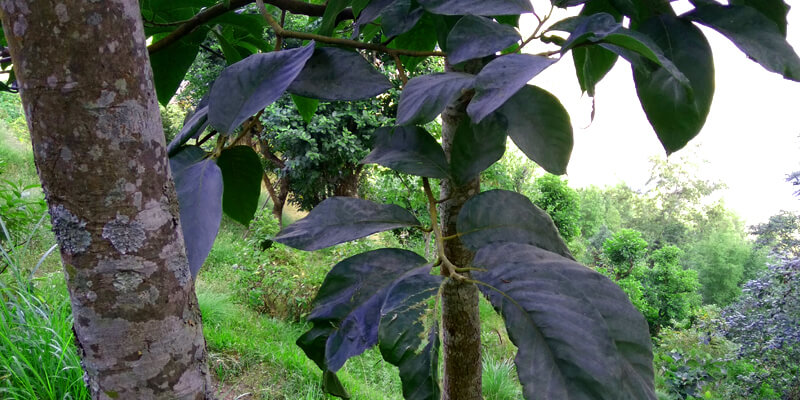
30. Asparagus racemosus
Common name: Asparagus, Nepali name: Kurilo, Order: Asparagales, Family: Liliaceae Flowering season: July to August
Asparagus racemosus is another famous medicinal plants which is an herb growing up to 1-2 m tall. This plant grows at an altitude of 1300-1400 meters.
It offers white flowers, needles like cladodes blackish-purple berries, and nutritious roots. This plant is also known by another name “Satavari”.
In Nepal, the roots and young stems of Asparagus are famous as vegetable. Similarly, this plant has medicinal value too.
Disease cured: Indigestion, Diabetes, Lactation, and Gastric ulcers.
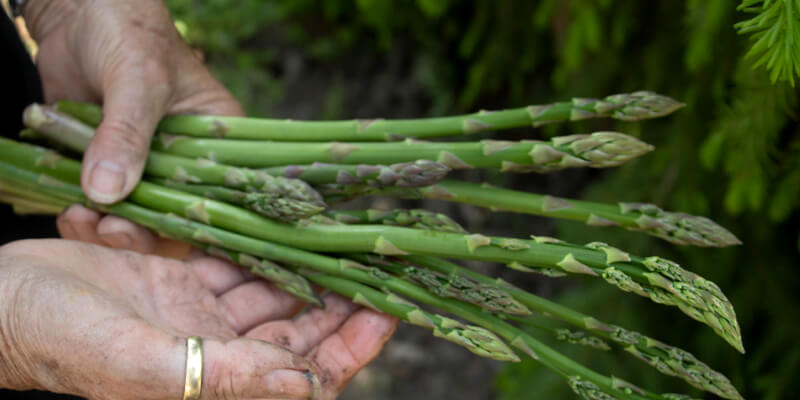
31. Artemisia vulgaris
Common name: Mugwort, Nepali name: Titepati, Rai Name: Salawa, Order: Asterales, Family: Asteraceae, flowering season: July – September
Artemisia vulgaris is an herbaceous perennial wild plant. It grows about 2 meters tall and prefers nitrogenous soil. This plant offers small reddish-brown or yellowish flowers, and aromatic green leaves with a bitter taste. Because of its aromatic properties, some farmers use it as an insect repellent and other people use it to flavor beverages.
Rai, an ethnic group of Nepal use this plant during the Dashain festival while sharing Tika instead of Jamara. Artemisia vulgaris is a drought-tolerant plant that can grow in both cultivated and wastelands.
Disease cured: Sterility, Stomachic, and Skin diseases.
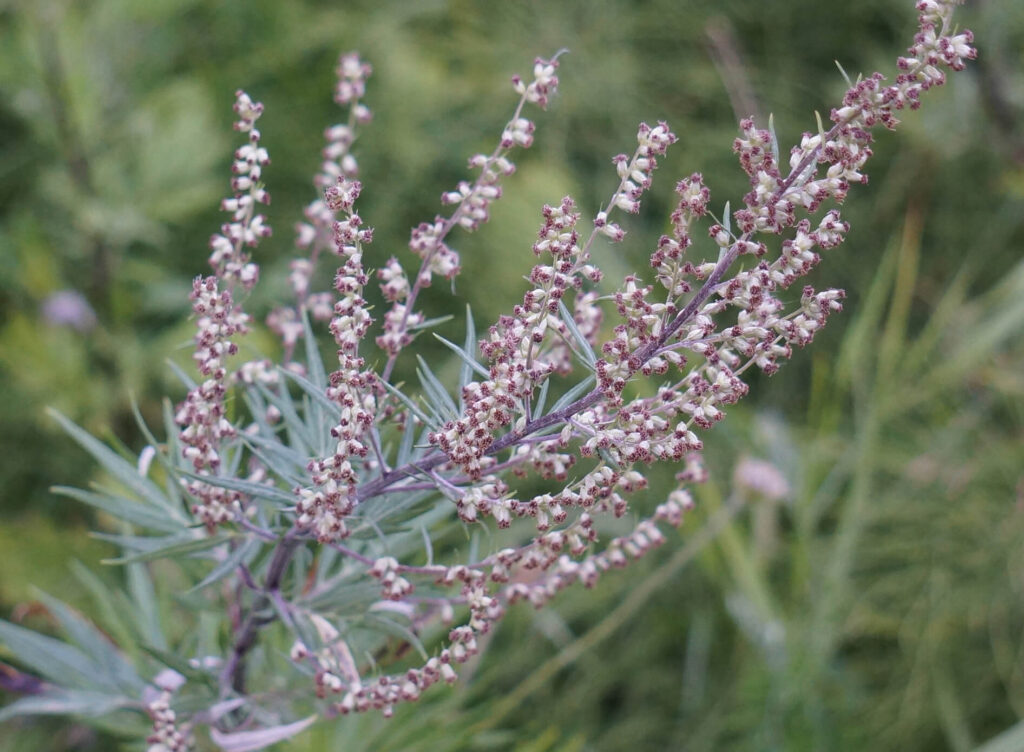
32. Belamcanda chinensis/Iris domestica
Common name: leopard lily/blackberry lily, Nepali name: Tyangpatare (Tarwari), Order: Asparagales, Family: Iridaceae, Flowering season: August – October
Belamcanda chinensis is one of the popular ornamental and medicinal plants commonly grown in gardens. It offers yellow-orange star-like petals spotted with red dots. So this plants is also known by another name leopard lily.
Its bitter yellowish root gives it medicinal value. This plant grows up to 60-90 cm high. In Nepal, people plant Belamcanda chinensis on their home gardens for ornamental and medicinal purposes.
Disease cured: Gonorrhea, Malaria, Tongue bumps, Throat pain, and Asthma.
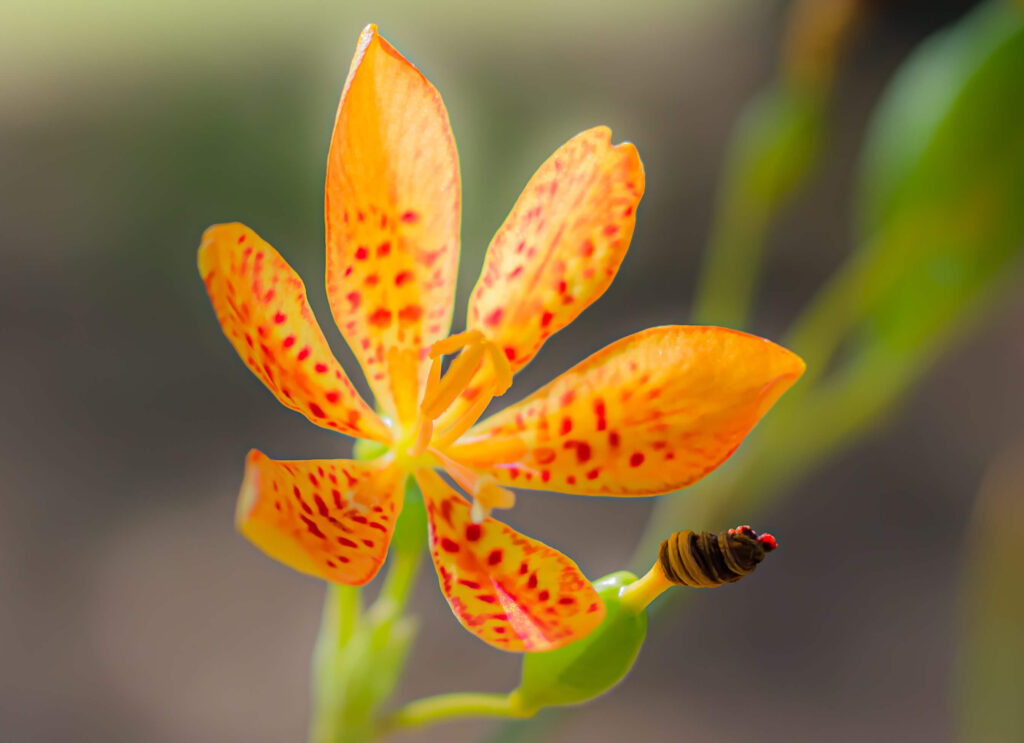
33. Cinnamomum camphora
Common name: Camphor tree, Nepali name: Kapur, Rai name: Bilimsi, Family: Lauraceae, Order: Laurales
Cinnamomum camphora is one of the valuable medicinal plants. It is an evergreen perennial tree that grows in temperate regions of Nepal. It contains edible fruit. The fruit itself has a medicinal value.
The aromatic and therapeutic oil can extract from the seed of camphor which is useful for the treatment of many diseases.
In the same way, essential oil extracted from the seed of the plant is applied to the forehead for treatment of fever, and cough. The fresh fruit of Camphor is also edible. It offers a pleasant smell.
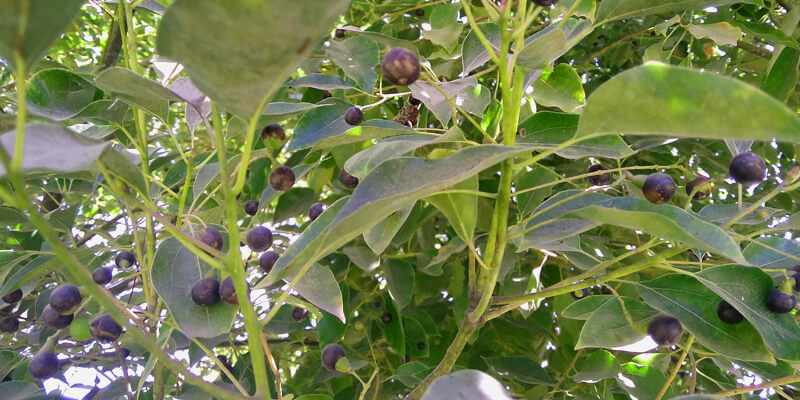
34. Clerodendrum chinense (C. philippinum)
Common name: Glory tree (Stickbush), Nepali name: Banabelee, Rai Name: Gandhe Chachang, Family: Verbenaceae
Clerodendrum chinense is an herb or small shrub which offers a strong aroma. It contains a white flower and also yellowish-green big leaves. This plant grows up to 3 meters high. Similarly, it prefers moist and fertile soil.
Especially, it is found in Nepal, China, India, the Philippines, and Indonesia. Insects are the main pollinators of Clerodendrum chinense. All parts of these plants are used as medicine.
Disease cured: Cut wounds and Rheumatism.
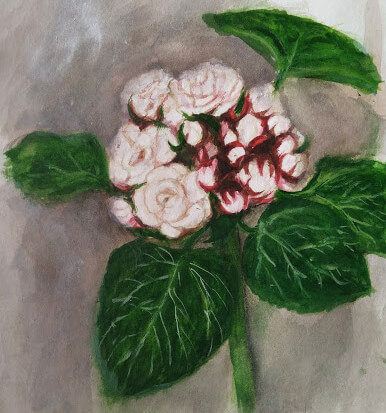
35. Tagetes minuta
Common name: Wild marigold, Nepali name: Saipatri, Order: Asterales, Family: Asteraceae Flowering season: October
Tagetes minuta is an annual andaromatic herb that grows up to 1.2 meters high. It is also called as “wild marigold”. Its flowers are small and numerous with a strong aroma. Therefore, it is famous as a flavoring agent in food and beverages industries. Similarly, it is used as an insect repellent.
In Nepal, people plant Tagetes minuta for its medicinal value rather than ornamental purposes. This plant is native to Brazil, Argentina, and Chile.
Disease cured: Gastritis, Pneumonia, and Skin infections.
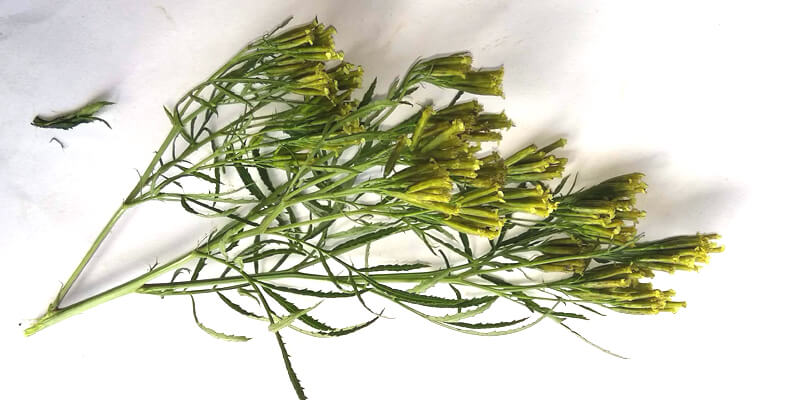
36. Punica granatum
Common name: Pomegranate, Nepali name: Anar, Rai name: Darim, Order: Myrtales, Family: Lythraceae
Punica granatum is a perennial shrub or small tree that contains edible fruit. Its height ranges between 5-10 meters. It prefers a warm climate. In Nepal, this plant is cultivated for food as well as for medicinal purposes.
Anar offers bright red flowers and also red-purple fruits. The fruits of Punica granatum are useful in making sauces, ice creams, and soups. Similarly, its flower and bark yield dye.
Disease cured: Digestive disorders, Diarrhea, Cancer, and Dysentery.
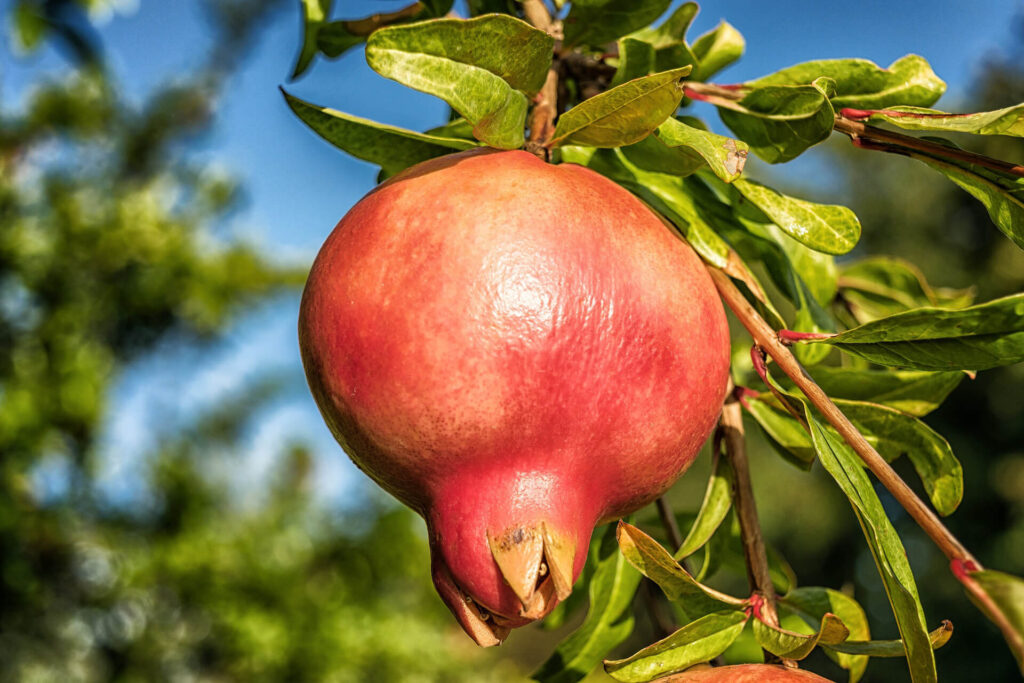
37. Semecarpus anacardium
Common name: Varnish tree/marking nut tree, Nepali name: Thulo Bhalayo, Order: Sapindales, Family: Anacardiaceae, Flowering season: May-September, Fruiting season: December-March.
Semecarpus anacardium is a perennial as well as deciduous tree that grows in warm climates of tropical regions. Its height reaches up to 15-25 meters high.
The plant contains greenish-white flowers, greyish-brown bark, and also purplish-black fruit. Bees and insects are the major pollinators for Semecarpus anacardium.
Black color can extract from its fruits.
Disease cured: Dry skin problem, Tumors, and Leprosy.
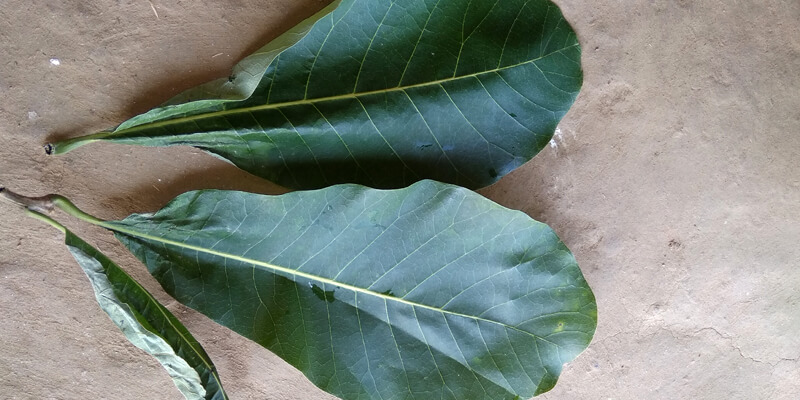
38. Achyranthes aspera
Common name: Chaff flower, Nepali name: Apamarga, Order: Caryophyllales, Family: Amaranthaceae, Flowering season: July-September
Achyranthes aspera is an herbaceous plant. Especially, it grows in the dry soil structure. But sometimes, it grows in the moist soil too. Its height reaches up to 120 cm tall. The plant contains thorny flowers. .
Disease cured: Throat pain, Snake-bites, and Pneumonia.
39. Bergenia ciliata
Common name: Hairy bergenia, Nepali name: Pashanbheda, Order: Saxifragales, Family: Saxifragaceae, Flowering season: March-May
Bergenia ciliata is an evergreen herbaceous plant growing around 12-17cm tall. It is also one of the valuable medicinal plants found in Nepal, Tibet, and Bhutan.
Especially, the plant contains leathery, rounded, and long leaves with pinkish-white flowers. In Nepal, it is used for multiple purposes i.e. food, ornamental, and as a medicine.
Disease cured: Body pain, Fever, Kidney stones, and Urinary problems.
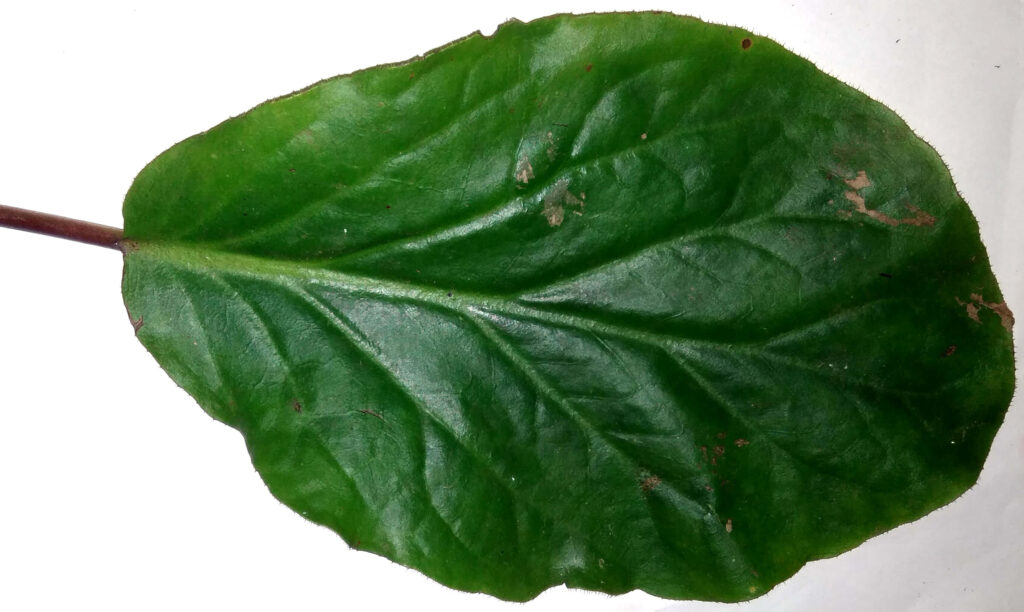
40. Rhus javanica (Rhus chinensis)
Common name: Chinese sumac, Nepali name: Bhakkiamilo, Rai name: Mahada, Order: Sapindales, Family: Anacardiaceae, Flowering season: August, Fruiting season: October
Rhus chinensis is a wild tree found in temperate as well as in tropical regions. It prefers loamy, moist, and well-drained soil. This plant is deciduous.
It has white flowers with imparipinnate leaves and soft stems. Fruiting also occurs in Rhus javanica. Initially, the fruits are greenish but offer white acidic cream when it matures.
Disease cured: Diarrhea, Dysentery, and Coughs.
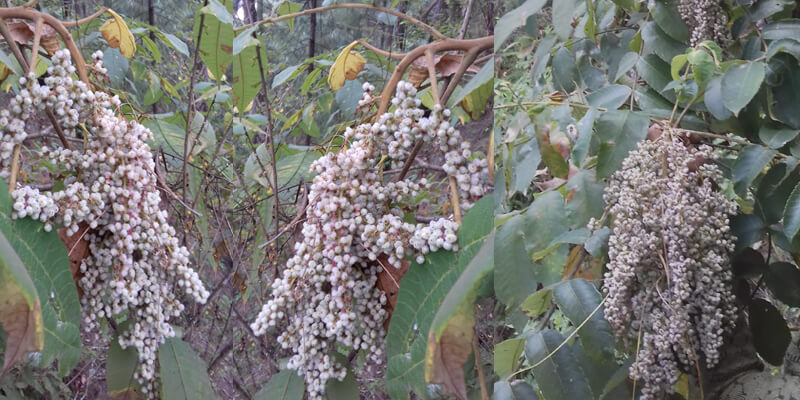
41. Coccinia grandis
Common name: Scarlet gourd, Nepali name: Golkankri, Rai name: Peparang, Order: Cucurbitales, Family: Cucurbitaceae
Coccinia grandis is a climber perennial wild plant that grows in both tropical and subtropical climates. Especially, it originates in Nepal, India, the Philippines, Malaysia, and Thailand.
The female plant offers sweet edible red fruit. Its edible fruit seems like cucumber in structure.
Disease cured: Leprosy, Asthma, Jaundice, and Fever.
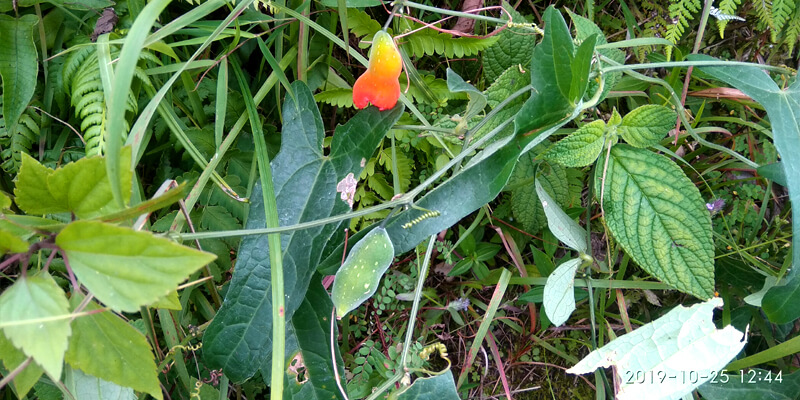
42. Oxalis corniculata
Common name: Sleeping beauty, Nepali name: Chariamilo, Order: Oxalidales, Family: Oxalidaceae
Oxalis corniculata is a low-growing herbaceous plant with a yellow beautiful flower, trifoliate leaves, and creeping stems. It is a common weed in the fields, however famous as a medicinal plant.
The leaves offer a sharp flavor that is edible. All plant parts are rich in Vitamin C.
Disease cured: Diarrhea and Throat pain.
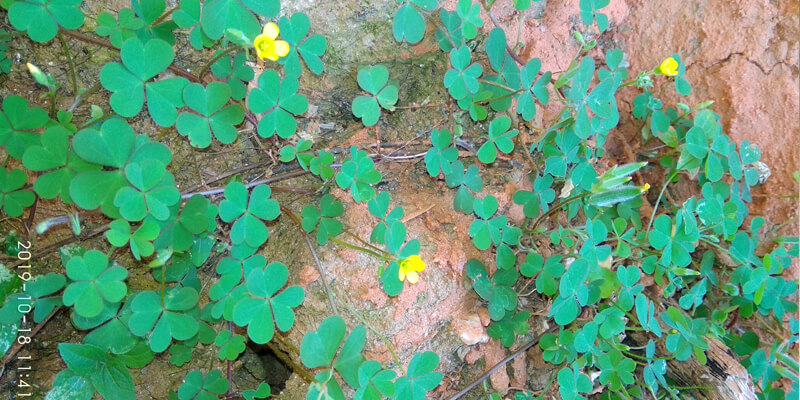
43. Cynodon dactylon
Common name: Vilfa stellata, Nepali name: Dubo, Order: Poales, Family: Poaceae
Cynodon dactylon is a fast-growing herb mostly cultivated in sports fields. Its growth prefers warm climates with a temperature of 15-27 degrees Celsius. But in winter, it stays dormant. It is mostly characterized by its numerous branches, strong rhizomes, and stolons.
This grass is also famous for garden decoration (lawn). In Nepal, Cynodon dactylon has also religious value. Hindu people use it while worshiping Lord Ganesh.
Disease cured: Mumps and wounds.
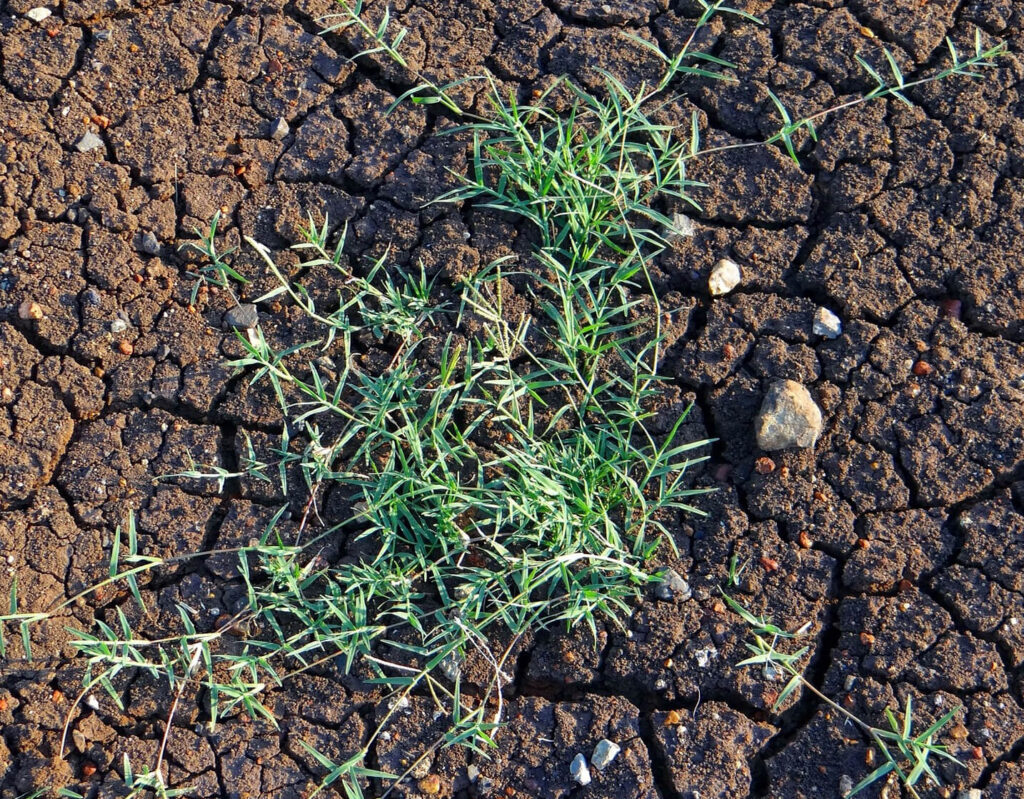
44. Rubia cordifolia
Common name: Common madder, Order: Gentianales, Family: Rubiaceae, Flowering season: June-August. Fruiting season: August-October.
Rubia cordifolia is a climbing herbaceous wild plant that grows in the Terai regions of Nepal. It contains whitish or greenish-yellow flowers, evergreen leaves, and also dark purplish fruits.
Normally its height goes up to 1.5 m tall. Its reddish blackberries are famous for their dye-yielding properties.
Disease cured: Blood disorders, Bronchitis, Dysentery, and Skin diseases.
45. Dioscorea deltoidea
Nepali name: Vyakur (Ban tarul), Rai name: Saki, Order: Dioscoreales, Family: Dioscoreaceae
Dioscorea deltoidea is a perennial climber plant that grows extensively and easily covers nearby trees. It offers a large amount of underground tuber which are edible. This is both a wild and cultivated plant found in fertile and well-drained soil.
Disease cured: Roundworm.
46. Juglans regia
Common name: Walnut, Nepali name: Okhar, Rai name: Khaisi, Order: Fagales, Family: Juglandaceae
Juglans regia is a deciduous tree. This plant is famous for medicinal, food, and also for its dye-yielding properties. Likewise, it is famous for its nutritional seeds.
Its height commonly ranges from 25-35 meters. This perennial plant has a strong root and stem system used for furniture purposes.
Disease cured: Cracked heels.
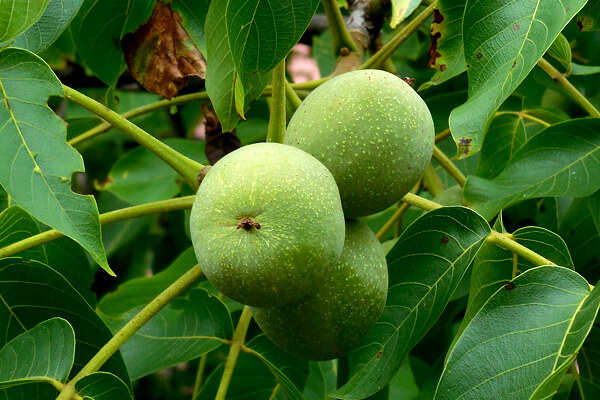
47. Bauhinia variegata
Common name: Mountain Ebony, Nepali name: Koiralo, Order: Fabales, Family: Fabaceae
Bauhinia variegata is a common fodder tree found in tropical climates of Nepal. It is also a dye-yielding deciduous plant. Brown color can be extracted from the bark of this plant. Its height reaches up to 10-12 meters.
In some places, people cultivate it as an ornamental tree because of its numerous pinkish flower and flowers, leaves, seeds are edible too.
Disease cured: Diarrhea, and Cut wounds.
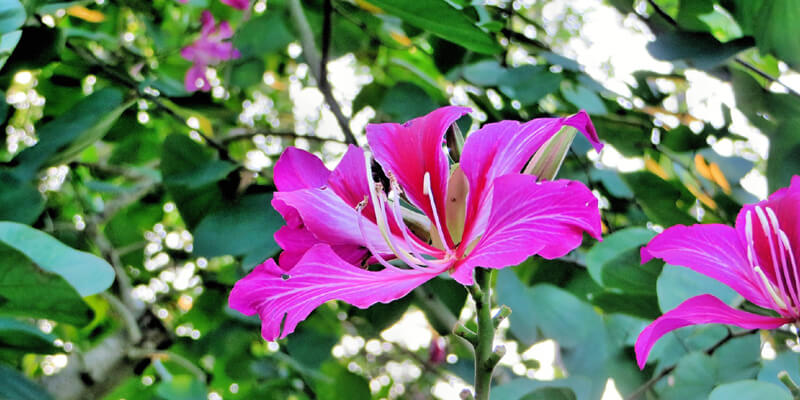
48. Piper Longum
Common name: Long pepper, Order: Piperales, Family: Piperaceae
Piper Longum is a slender creeping shrub that originates in subtropical and tropical regions of the world. It offers 2-7 cm long spikes and alternate leaves.
Firstly, it prefers light, porous, fertile, and well-drained soil under partial shade. Piperin and piper longuminine are major chemical constituents of this plant.
Disease cured: Respiratory tract diseases (Cough, Cold, Asthma, bronchitis)
49. Dactylorhiza hatagirea
Nepali name: Panchaule, Order: Asparagales, Family: Orchidaceae, Harvesting period: September- November
Dactylorhiza hatagirea is one of the valuable medicinal plants found in the Himalayan regions of Nepal. This perennial herb grows at an altitude of 2800 m to 4000 meters. It bears lanceolate leaves, pink-purple flowers, and also fingers-like roots having a sweet taste.
Diseased cured: Pyorrhea, Cuts, Stomachache, and Anemia.
50. Nardostachys grandiflora
Order: Dipsacales, Family: Caprifoliaceae, Harvesting period: October
Nardostachys grandiflora is also a famous medicinal plants. It is a perennial herb that grows up to 10-60 cm high. Especially, it grows at grassy slopes of Himalayan regions at an altitude of 3000 m to 5000 m.
This plant bears pinkish red or bluish-white flowers. It bears a large number of chemical constituents including Jatamansinol, Actinidin, Ketone, and Sesquiterpene.
Nardostachys grandiflora also offers useful aromatic essential oil that is used as herbal medicine and to make perfumes
Disease cured: Jaundice, Insomnia, Headache, Birth difficulties, Epilepsy, and Migraine.
51. Taxus wallichiana
Common name: Himalayan yew, Nepali name: Lauth salla, Order: Pinales, Family: Taxaceae
Taxus wallichiana is one of the famous medicinal plants in Nepal. It is an evergreen tree that grows in Himalayan regions above an altitude of 2300 meters. This plant loves to grow in nutrients as well as in humus-rich soil.
Taxol is a major chemical constituent found in Taxus wallichiana but it is very hard to extract (1 kg of Taxol extract from 10,000 kg of Taxus). It is a shade tolerant plant and can also grow under full sun.
Disease cured: Cancer, Fever, Inflammatory, Epilepsy, Indigestion, Hysteria, and Headache.
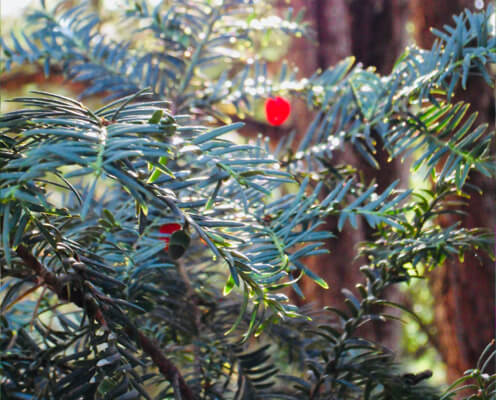
I hope this article helped you to find the top 50+ medicinal plants of Nepal.
